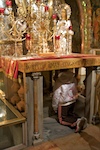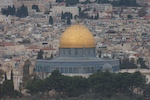What a whirlwind 2011 has been, and it ends with the stunning news of the change in leadership in North Korea.
Arab Spring started in January with the self-immolation of Mohamed Bouazizi and soon spread to many of the Middle Eastern countries and north Africa. This lead to the downfall of President Zine El Abidine Ben Ali of Tunsia, President Hosni Mubarak of Egypt, and Colonel Muammar Gaddafi of Libya (following the use of NATO military intervention). President Ali Abdullah Saleh of Yemen had to leave the country after being burned when his palace was attacked – Yemen seems to be teetering on the edge. Syria has had an uprising during the year too.
Then the earthquake in Christchurch, followed 3 weeks later by the massive earthquake and tsunami in Japan and the subsequent meltdown at the Fukushima Daiichi nuclear power plant.
May brought the news that Osama bin Laden was found and killed in Pakistan in a daring night raid by the US. A few months later, the world reflected on the 10th anniversary of the September 11 attacks.
In the summer the Space Shuttle retired and Prince William and Catherine Middleton were married in the largest wedding since his father and Diana.
The largest country in Africa, Sudan, split. Thailand suffered major floods caused over $45 billion in damage. The floods were the fourth most expensive natural disaster in the world. The world population reached 7 billion people. Steve Jobs died.
The year of the protests spread to North America with Occupy Wall Street. The protests soon spread worldwide.
Europe has staggered through 2011 with a continuing series of economic crises over sovereign debt.
And today the news of the death of Kim Jong-il. North Korea is one of the most troubling countries of the world. It is a nuclear-armed society based on a cult of personality – and the personality just died.
2011 was be a year to be remembered. I imagine that the events of this year will have impacts far into the future.

 Au 10e siècle av. J.-C., Jérusalem a été conquise par le roi David; c’est devenu “la ville de David”. Le Roi Salomon, fils de David, a fait construire le premier Temple de Jérusalem, sur le Mont Moriah. Le Temple de Jérusalem a contenu l’Arche d’alliance, ou on y gardait les tables de la Loi.
Au 10e siècle av. J.-C., Jérusalem a été conquise par le roi David; c’est devenu “la ville de David”. Le Roi Salomon, fils de David, a fait construire le premier Temple de Jérusalem, sur le Mont Moriah. Le Temple de Jérusalem a contenu l’Arche d’alliance, ou on y gardait les tables de la Loi. C’est pendant la période romaine que Jésus est né. Quand il a eu 30-33 ans, il irait à la ville pendant la fête de la Pâque. Voici la salle qui, peut-être, était la salle de La Cène / dernier repas. Jésus est arrêté au jardin de Gethsémani. Finalement, Jésus est condamné par Ponce Pilate, et il est crucifié au lieu nommé Golgotha, à côté de la Vieille ville. Deux lieux ont été proposés pour le site de Golgotha – l’Église du Saint-Sépulcre ou le jardin de la Tombe.
C’est pendant la période romaine que Jésus est né. Quand il a eu 30-33 ans, il irait à la ville pendant la fête de la Pâque. Voici la salle qui, peut-être, était la salle de La Cène / dernier repas. Jésus est arrêté au jardin de Gethsémani. Finalement, Jésus est condamné par Ponce Pilate, et il est crucifié au lieu nommé Golgotha, à côté de la Vieille ville. Deux lieux ont été proposés pour le site de Golgotha – l’Église du Saint-Sépulcre ou le jardin de la Tombe. Jérusalem est conquise par les Arabes en 638. Les Musulmans ont construit la Mosquée Al-Aqsa, et le Dôme du Rocher. Le Dôme du Rocher est sur le même site que Les Temples. Dans le Coran, le Prophète Mahomet a commencé le voyage nocturne au rocher (sous le dôme), quand il a parlé avec Allah.
Jérusalem est conquise par les Arabes en 638. Les Musulmans ont construit la Mosquée Al-Aqsa, et le Dôme du Rocher. Le Dôme du Rocher est sur le même site que Les Temples. Dans le Coran, le Prophète Mahomet a commencé le voyage nocturne au rocher (sous le dôme), quand il a parlé avec Allah.